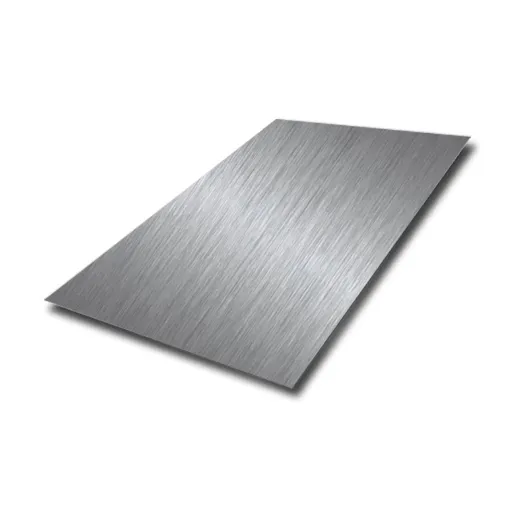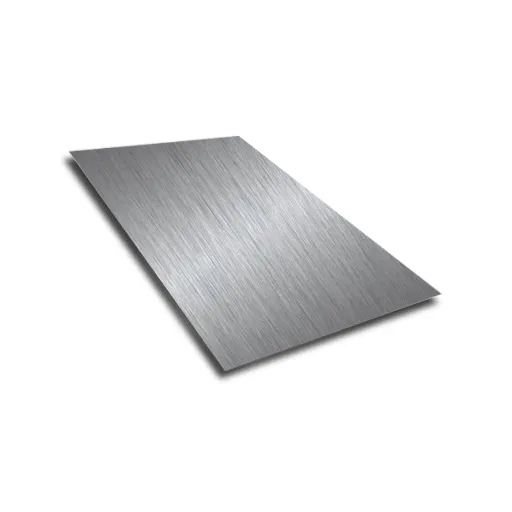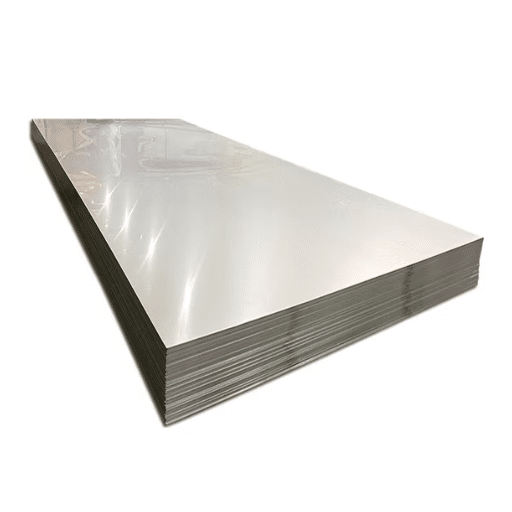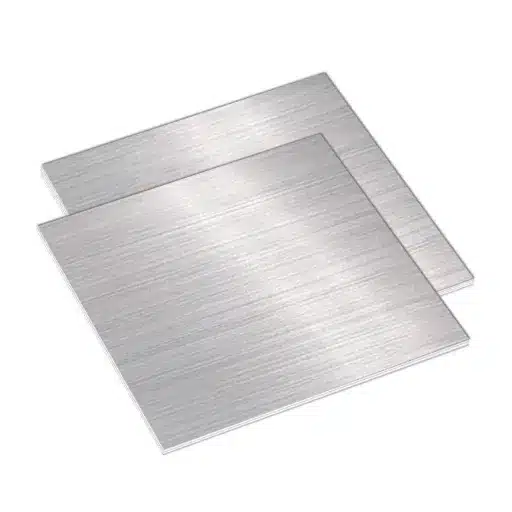When selecting materials for engineering, medical, or even consumer applications, one has to consider whether titanium or stainless steel will be used. Both materials are about strength, longevity, and corrosion resistance, but differ so much in properties that they are suited for separate applications. This guide tries to explain the fundamental differences between titanium and stainless steel, giving a detailed comparison of their makeup, performance, cost, and application. These are essentials to consider when working on a high-performance project or when making everyday decisions, to receive an informed decision. Keep reading to know the factors differentiating these materials and the advantages and disadvantages of each.
What are the Main Properties of Titanium?
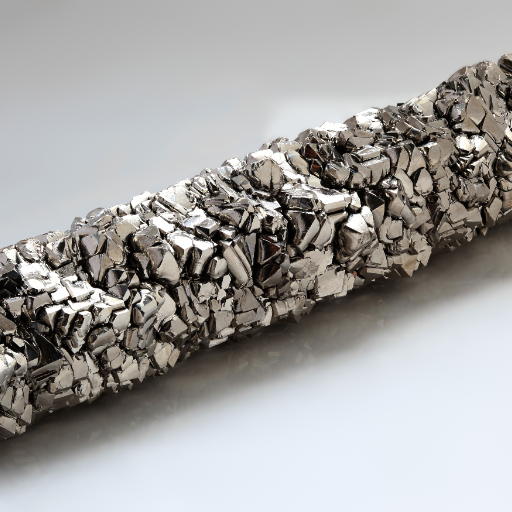
- High Strength-to-Weight Ratio
Titanium has a very good strength-to-weight ratio, better than many metals for many structural uses. To put it another way, it is about 45% lighter than steel yet manages to furnish roughly the same strength against loadings. It is a crucial property in the aerospace and automotive industries, where weight is of severe consideration.
- Corrosion Resistance
This oxide layer is both tough and passive and forms on the surface of titanium whenever oxygen comes into contact with it, making it almost resistant to corrosion. Thus, it is best utilized in challenging environments such as marine settings and chemical processing plants.
- Biocompatibility
Titanium is bereft of any toxic effect on human tissue and creates no unsafe immune responses, which are indicative of the best material for the purpose of implants, prosthesis, and other medical applications, with the exception of titanium.
- Temperature Tolerance
Titanium is ranked among the highest-strength metals over a wide temperature scale. It remains strong even under infernal heat conditions as high as about 1100°F (593°C) in some alloys and, thus, finds applications in manufacture of high-temperature components for aircraft engines and industrial processes.
- Low Density
Titanium is one metal with a density of around 4.5 g/cm³, which is less than that of steel at nearly 7.8 g/cm³, plus that of nickel-based superalloys. An ultralight property that can reduce weight without compromising the integrity of the structure.
Knowing these properties explains why titanium is always the first choice in highly demanding and performance-oriented applications. It is the material that combines engineering with design to greatly help in diverse industrial and commercial applications.
What Makes Titanium Unique?
Thanks to its unique properties, the conjugated use of titanium also finds application in vastly different advanced technology industries. The excellent strength-to-weight ratio allows engineers to develop lightweight aerospace component parts: airframe, engine, and landing gear that sustain extreme mechanical and thermal stresses. On the other hand, a high corrosion resistance application of titanium installations is in marine works for shipbuilding, desalination plants, and underwater structures. Titanium is utilized for surgical implants and other replacements of joints, dental implants, and any other application where biocompatibility and durability are a must. Similarly, titanium is used in piping, heat exchangers, and reactors in chemical processing, being exposed to corrosive substances, such as chlorine and strong acids. Such instances probably justify titanium being the most versatile and practically infinite in the engineer’s solution to industry’s modern problems.
How is Titanium Used in Various Industries?
- Aerospace Industry
Being all-around tough, titanium is suited for aerospace applications requiring the resistance to high stress and high temperatures. Approximately 50% of the materials used in modern jet engines and airframe structures are titanium alloys. For example, the Boeing 787 Dreamliner structures with 15% titanium exist as a good demonstration of titanium being used wherever high stresses are encountered in critical components, such as landing gear, engine parts, and leading edges.
- Medical Industry
Titanium implants are preferred because of good biocompatibility characteristics. Surgical instruments made out of titanium alloy are used extensively whilst making implants for joint replacements (hip and knee) and dental implants. There is recent evidence that the titanium dental implant market globally stood at $4 billion by 2022. Being non-toxic and bonding strongly with bone tissue gave the patient improved outcomes.
- Automotive Industry
Titanium is used in vehicles that qualify as high-performance and considered luxury in components of exhaust systems, connecting rods, and valve springs. Being lightweight, titanium helps in the conservation of fuel and reduction of emissions. For instance, Ti alloys are used in Formula One cars; the alloys reduce the total weight of the car while still giving it structural strength.
- Chemical Processing Industry
Titanium finds its application in the chemical sector because of its higher corrosion resistance. It utilizes heat exchangers, condensers, storage tanks, and process piping sort of equipment against very aggressive chemicals such as chlorine gas and sulfuric acid. For instance, in such environments, it has been concluded that titanium lasts anywhere from three to four times longer than stainless steel, yielding great cost savings in maintenance.
- Energy Sector
Titanium holds the unique tandem in power generation, especially for nuclear, geothermal, and desalination projects. It remains resistive as condensers, turbine blades, and piping operating in very high temperature and pressure conditions. Offshore platforms and renewable energy conversion systems use titanium for its resistivity to saline environments.
What are the Different Titanium Grades?
|
Grade |
Key Characteristics |
Applications |
Notes |
|---|---|---|---|
|
Grade 1 |
High ductility, corrosion-resistant |
Chemical processing, marine |
Pure titanium, softest and most ductile |
|
Grade 2 |
High strength, good weldability |
Aerospace, desalination plants |
Widely used commercially |
|
Grade 3 |
Higher strength than Grade 2 |
Aerospace, industrial applications |
Limited to specialized uses |
|
Grade 4 |
Highest strength among pure grades |
Medical implants, heat exchangers |
Excellent corrosion resistance |
|
Grade 5 (Ti-6Al-4V) |
Very high strength, lightweight |
Aerospace, medical applications |
Most commonly used alloy |
|
Grade 6 |
Alloyed with Aluminum and Tin |
Jet engines, aircraft structures |
Good creep resistance |
|
Grade 7 |
Grade 2 with palladium added |
Chemical processing, marine |
Superior corrosion resistance |
|
Grade 9 |
Medium strength, good corrosion resistance |
Aerospace, sports equipment |
Often used in tubing |
|
Grade 12 |
Excellent corrosion-resistant to high temperatures |
Marine, industrial use |
Better than Grades 1-4 in heat stability |
|
Grade 23 (Ti-6Al-4V ELI) |
High purity, biocompatible |
Medical implants, surgical tools |
Low interstitial elements |
How Does Stainless Steel Compare to Titanium?
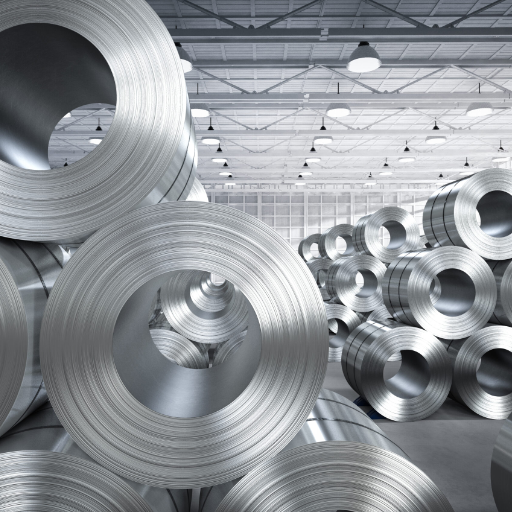
This singular difference fairly defines different applications for stainless steel and titanium. Stainless steel is highly durable and corrosion-resistant in the presence of moisture or chemicals but is heavier. The strength-to-weight ratio of titanium is better; hence, it is both superior in strength and far lighter. Also, titanium exhibits remarkable corrosion resistance even in very extreme environments, such as seawater or acidic environments. However, stainless steel is comparatively cheap and fairly easy to manufacture in its own territory, mainly because of lower costs of the raw materials and the simpler fabrication processes. The choice between the two commonly hinges on the needs peculiar to the application-whatever those may be: weight considerations, durability, or pricing.
What are the Different Types of Stainless Steel?
|
Type of Stainless Steel |
Key Characteristics |
Common Applications |
|---|---|---|
|
Austenitic |
High corrosion resistance, non-magnetic |
Food processing, medical tools |
|
Ferritic |
Magnetic, moderate corrosion resistance |
Automotive parts, kitchenware |
|
Martensitic |
High strength, wear-resistant |
Cutlery, surgical instruments |
|
Duplex |
Combines austenitic & ferritic properties |
Chemical plants, marine industry |
|
Precipitation-Hardening |
High strength, excellent mechanical properties |
Aerospace, high-performance tools |
|
Super Austenitic |
Extremely high corrosion resistance |
Desalination, chemical processing |
What are the Properties of Austenitic Stainless Steel?
- Corrosion Resistance
Austenitic stainless steel displays excellent anticorrosion action against most corrosive conditions: in humid conditions, marine environments, acidic, or alkaline solutions. The effect comes from the high chromium (16-26%) and nickel (6-22%) present, which cause the formation of a passive protective oxide layer on the surface of the material.
- Non-Magnetic Nature
Typically, annealed austenitic stainless steel is essentially non-magnetic, primarily dependent on its face-centered cubic (FCC) crystal structure; however, now and then, cold working causes partial magnetism on certain grades.
- High Ductility
The ductility of austenitic stainless steel is higher in making it favorable for hard forming operations such as deep drawing and spinning, allowing intricate parts to be produced without fracture.
- Excellent Weldability
Low weldability of austenitic stainless steels is presented with the number of processes almost equal to those for joining carbon steels. Welding procedures often include TIG welding, MIG welding, resistance welding.
- Tensile Strength and Hardness
The material usually exhibits the tensile strength range of 485-620 MPa (70,000-90,000 psi) in the annealed condition. Aging can increase these values, depending on the aging parameters.
The gravitas imparted to austenitic stainless steel by these traits is thereof derived for making it useful across many industries like construction, automotive, chemical processing, and medical equipment. Being versatile, it promises to perform reliably under several different conditions and challenges.
How do Martensitic Stainless Steels Differ?
Martensitic stainless steels differ much more from austenitic types in composition, mechanical properties, and applications. The chief difference is that they contain more carbon, typically between 0.1% and 1.2%, enabling hardening by heat treatment. Due to this capability of being hardened, these steels attain much higher tensile strength and wear resistance than austenitic kinds, with tensile strengths even in excess of 1,000 MPa (145,000 psi) upon full heat treatment.
The martensitic steel’s structure is comprised of body-centered tetragonal (BCT), generated during the rapid cooling of austenite. A BCT structure, in fact, lowers corrosion resistance in comparison with their austenitic counterparts due to rather low chromium content, usually from 12% to 18%. Hence, martensitic grades are typically put to use in environments that demand high strength and hardness rather than corrosive exposure.
What is the Difference Between Titanium and Stainless Steel?
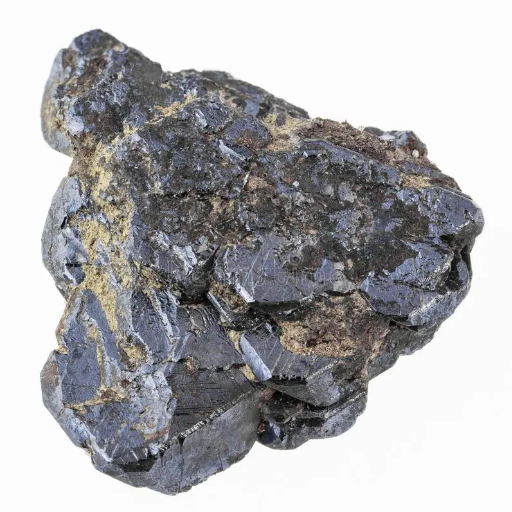
Titanium and stainless steel have far-reaching differences to suit different applications. Titanium is especially light and thus has a much better strength-to-weight ratio, for which it is used in aerospace, medical implants, and applications where every bit of weight goes in cutting. These are the types that exhibit incredible corrosion resistance in extreme environments-both seawater and chemical exposures.
Compare the Differences: Titanium and Stainless Steel
|
Key Point |
Titanium |
Stainless Steel |
|---|---|---|
|
Weight |
Lightweight |
Heavier |
|
Strength-to-Weight Ratio |
Excellent |
Moderate |
|
Corrosion Resistance |
Exceptional, even in seawater |
Good, especially in austenitic grades |
|
Durability |
High fatigue resistance |
High rigidity and durability |
|
Cost |
Expensive |
More affordable |
|
Machinability |
Difficult to machine |
Easier to machine |
|
Thermal Conductivity |
Low thermal conductivity |
Higher thermal conductivity |
|
Biocompatibility |
Superior, ideal for implants |
Moderate |
|
Applications |
Aerospace, medical, high-performance gear |
Kitchenware, construction, medical tools |
|
Magnetic Properties |
Non-magnetic |
Can be magnetic (depends on alloy type) |
Which Material is More Resistant to Corrosion?
Corrosion resistance is another parameter wherein titanium generally outclasses stainless steels. Titanium action consists of creating a dense and highly stable oxide film on its surface that blocks all corrosive agents. Such an oxide film layer is self-repairing; it can erect itself instantly if there is any damage and, therefore, offers prolonged corrosion resistance to environments such as seawater, chlorine, and in some cases, even certain acids.
Stainless steel, especially the austenitic grades such as 316 and 304, has comparatively decent resistance to corrosion. However, when exposed to chloride-rich environments for long periods, stainless steel is more prone to pitting and crevice corrosion. As the time order will dictate, constrained conditions demand further coating or treatment on stainless steel, including passivation. Titanium, by contrast, is superior and much preferred in marine engineering, aerospace, and implantation for long-term durability under demanding conditions.
What are the Advantages of Using Titanium Alloy Over Stainless Steel?
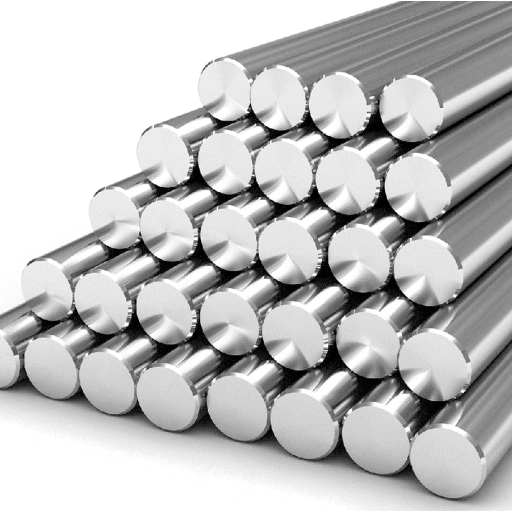
- Superior Corrosion Resistance
Titanium alloys are well resistant to corrosion in saltwater and other highly corrosive environments. The application of the marine, aerospace, and medical sectors anticipates the presence of harsh conditions as their life span.
- High Strength-to-Weight Ratio
Even lighter than stainless steel is titanium, weighting less but equal in strength or stronger. Weight reduction is a primary concern in almost every engineering application, especially in the design of aircraft and spacecraft.
- Biocompatibility
Titanium has perfect biocompatibility with the human body. It does not induce any adverse reactions; hence it is applied in the most critical implantable devices such as joint replacements and dental implants.
- Durability in Extreme Temperatures
Titanium prolongs its structural integrity to a wider range of temperatures when compared to stainless steel and is, thus, applicable in environments that are asymmetrically hot or extremely cold, for instance, aerospace and industrial processes.
These peculiar benefits provide titanium alloys the first emphasis in industries which require durable, lightweight properties, and resistance to harsh environmental conditions.
Why is Titanium Lighter than Stainless Steel?
In the literal sense, the inability to weigh in lightness is the result of a lower density. Titanium has a density of some 4.5 g/cm³, which is in marked contrast with stainless steel’s density of about 7.5 to 8.0 g/cm³, depending on the kind of alloy it may be. The substantial fall in density results in a worthy mention in the weight comparison of a titanium-made component against one made of steel. Despite the low weight of titanium, in fact, it exhibits a high-strength-to-weight ratio superior to that of stainless steel in many areas. This makes titanium a perfect candidate for aerospace or biomedical industries, where under all conditions, the cutting down of weight is vital with no compromise on structural integrity. Moreover, considering the fact that the atomic structure of titanium also helps in its being lighter, the presence of a greater number of protons and neutrons per atom in stainless steel-type alloys arising from heavy elements such as nickel and chromium renders it heavier.
What are the Applications of Titanium Alloys?
- Aerospace Industry
Titanium alloys are top-grade materials for aircraft and spacecraft manufacturing. Their advantage of being lightweight yet capable of standing heavy loads keeps them in demand for vital parts such as engine components, airframes, and landing gear, as well as fasteners. Titanium alloys offer the perfect stimuli to the best tourism techniques to a cine of turbine blades of a jet engine that resist both high temperatures and mechanical stresses. Titanium alloys are believed to comprise 15% to 30% of the modern airplane by weight.
- Biomedical Field
Solar rays encountered by the titanium alloys rendered biocompatible and resistant to corrosion in the body fluids have so far been an interesting choice considered in the medical devices during dental implants, orthopedic implants like hip and knee replacements, and surgical instruments. In these applications, titanium alloys have made a notable impact in building on implant life and enhancing their use, with titanium dental implants being proven to have more than 90% success rate after 10 years.
- Automotive Industry
Used in high-performance vehicles, especially through motorsports, titanium alloys provide connecting rods, valves, and exhaust systems. The further weight reduction with titanium also enhances vehicle performance, fuel efficiency, and speed. For instance, titanium exhaust systems can provide up to 40% weight saving over stainless steel counterparts.
- Chemical Processing
The corrosion resistance of titanium alloys makes them suitable for highly corrosive environments faced in chemical processing plants. Such are their usages in heat exchangers, condenser tubes, reactor vessels, and piping systems dealing with acids, e.g., sulfuric acid and hydrochloric acid. Being highly durable in such corrosive mediums serves to drastically enhance equipment life expectancy while lessening maintenance costs.
- Marine Applications
When Should You Choose Stainless Steel Over Titanium?
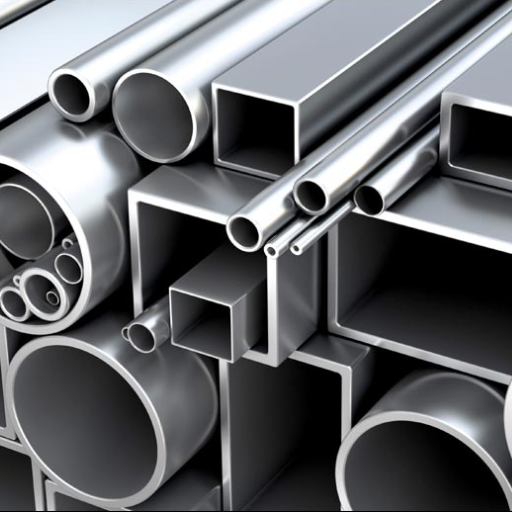
Stainless steel finds its foremost applications when low cost and availability rank first in a consideration list. It is not so strong in corrosion resistance, but at one-fourth the cost of titanium, it does provide some resistance against corrosion and certainly strength and durability, where it cannot weigh very much. Stainless steel finds applications wherever extreme weight reduction is not of prime concern, such as construction frameworks, kitchenware, and general manufacturing. Also, stainless steel will perform dependably where temperatures and corrosion risks are moderate without the upward price tagging of titanium.
What are the Cost Implications of Stainless Steel?
Stainless steel being a cheaper option than a high-priced metal such as titanium for many application uses is indeed a very good alternative. Lower production cost arises because of the generic availability of raw materials like iron ore, chromium, and nickel used in making stainless steel. Another way that helps keep the supply stable and therefore keeps it cost-efficient is recycling.
Stainless steel prices can oscillate in keeping with global market conditions such as price variations in raw materials, prices for energy, and demand for manufacturing. For instance, price variations for nickel may affect stainless steel quite severely, mostly the austenitic categories, which have a comparatively high nickel content. However, the less expensive lower-nickel or nickel-free ones such as ferritic stainless steel are excellent alternatives for less demanding uses.
In What Situations is Stainless Steel Preferred?
Different industries are into it because it has profound corrosion resistance and durability alongside aesthetics. These are few places where stainless steel finds application wherever materials are in exposure to moisture, chemicals, or some other agents that cause oxidation: marine equipment, pipelines, and chemical plants. It is also suitable for use in suitable hygienic situations such as food processing, pharmaceuticals, and medical installations, where cleanliness is paramount and ease of sterilization is considered. Besides, stainless steel finds its strength and is good to use in high-temperature areas; most construction projects need some structural supports and cladding and architectural designs that intend to combine durability with beauty. For instance, needing some amount of lightness without the compromise of strength, stainless steel grades like duplex or those martensitic variants find precedence. And so are these properties making it a well-versed and very reliable building material for industrial, commercial as well as residential purpose.
Reference Sources
1. Advancing Metallic Biomaterials for Biomedical Implants: This study highlights the biocompatibility and mechanical properties of titanium alloys and stainless steels in biomedical applications. Titanium alloys are noted for their superior corrosion resistance and biocompatibility, while stainless steels like AISI 316L are valued for affordability and mechanical strength.
2. Complex Material and Surface Analysis of Anterolateral Distal Tibial Plate of 1.4441 Steel: This research investigates the corrosion resistance and mechanical properties of nickel-based austenitic stainless steel (1.4441). It highlights the challenges of nickel ion release during corrosion, which can lead to cytotoxicity.
3. Laser Welding of TC4 Ti Alloy and 304 Stainless Steel: This paper explores the challenges of joining titanium alloys (TC4) and stainless steel (304) due to their differing thermal and mechanical properties.
Frequently Asked Questions (FAQs)
Q: What are the key differences between titanium vs stainless steel?
A: The key differences between titanium and stainless steel include weight, corrosion resistance, strength, and cost. Titanium is lighter and stronger than stainless steel, while stainless steel is more affordable and easier to work with. Titanium also has superior corrosion resistance compared to many steel alloys.
Q: How does the corrosion resistance of titanium vs stainless steel compare?
A: Titanium has exceptional corrosion resistance, often outperforming stainless steel in harsh environments. Pure titanium is especially resistant to corrosion, while 316 stainless steel is known for its corrosion resistance among stainless steels, particularly in marine applications.
Q: Is titanium stronger than stainless steel?
A: Yes, titanium is generally stronger than stainless steel while being much lighter. This strength-to-weight ratio is one of the key advantages of titanium, making it a preferred choice in aerospace and high-performance applications.
Q: What are the differences in cost between titanium and stainless steel?
A: Titanium is typically more expensive than stainless steel due to its extraction and processing costs. This higher price is reflected in applications where its properties are essential, such as in aerospace and medical devices.
Q: What are the different grades of stainless steel and how do they compare to titanium?
A: Stainless steel comes in various grades, such as 304 and 316, which differ in corrosion resistance and strength. Grade 316 stainless is more resistant to corrosion than 304, but both still do not match the corrosion resistance of titanium.
Q: What are some common applications for titanium vs stainless steel?
A: Titanium is commonly used in aerospace, medical implants, and high-performance sports equipment due to its lightweight and strong characteristics. Stainless steel, on the other hand, is widely used in kitchenware, construction, and automotive applications due to its durability and cost-effectiveness.
Q: Can titanium and stainless steel be used together in applications?
A: Yes, titanium and stainless steel can be used together in applications. However, care must be taken to avoid galvanic corrosion, which can occur when the two metals are in contact in the presence of an electrolyte. Proper insulation or coatings can mitigate this issue.
Q: How do the mechanical properties of titanium alloys compare to stainless steel alloys?
A: Titanium alloys typically exhibit higher strength and lower density than stainless steel alloys. While stainless steel alloys like duplex stainless steel provide good strength and excellent corrosion resistance, titanium alloys are often preferred for their lightweight and high tensile strength characteristics.
Q: What is commercially pure titanium and how does it differ from titanium alloys?
A: Commercially pure titanium is a non-alloyed form of titanium, primarily known for its outstanding corrosion resistance and biocompatibility. In contrast, titanium alloys incorporate other metals to enhance specific properties such as strength and heat resistance, making them suitable for various applications.

